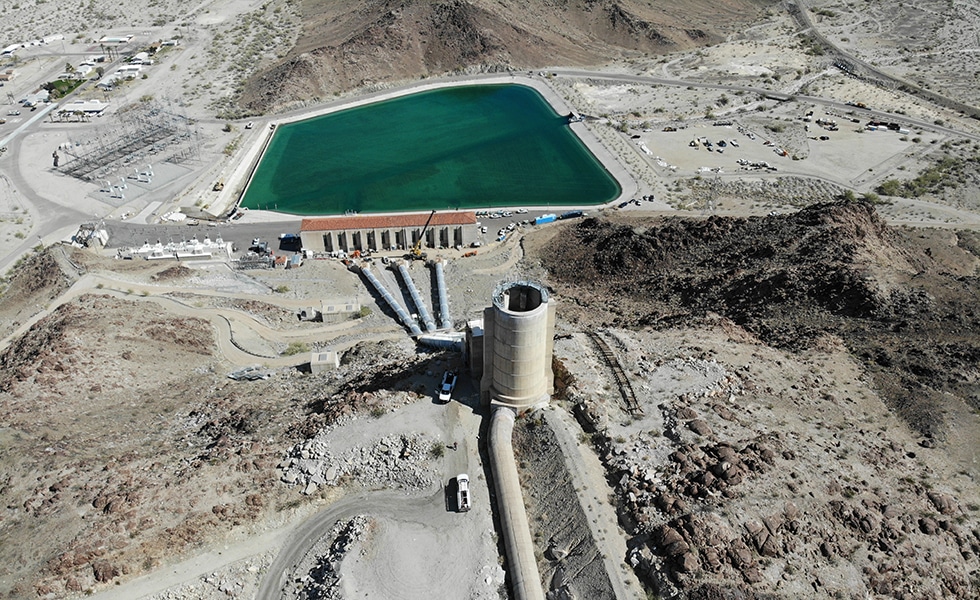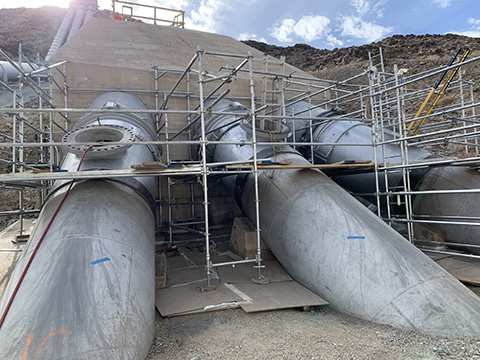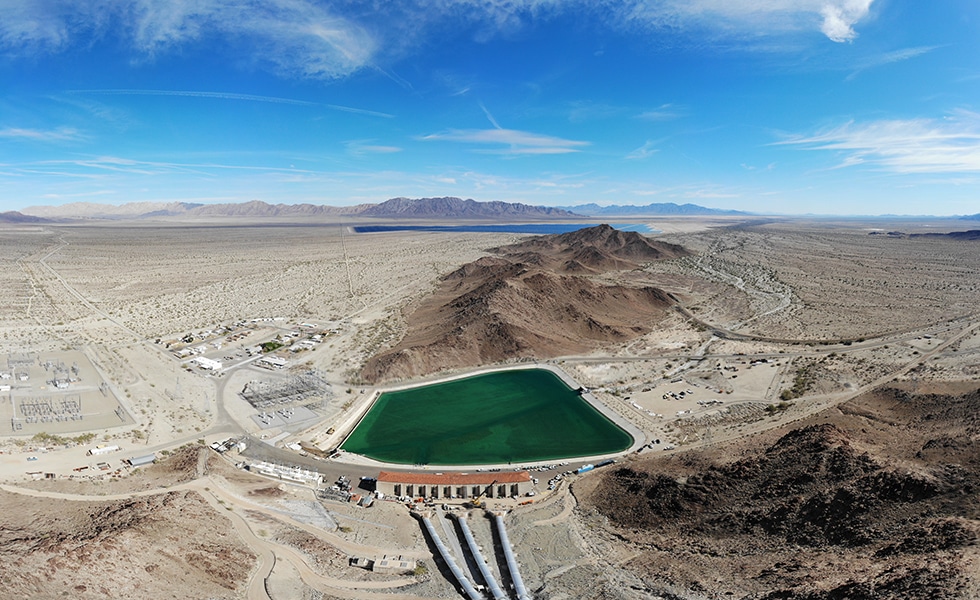Julian Hinds Pumping Station

- Accommodate for Thermal Movement
- Compressed Construction Schedule
- Design Flexibility
- Ease of Installation
The Metropolitan Water District of Southern California (MWD) is the nation’s largest wholesale water agency that operates a complex conveyance, storage, and distribution system including reservoirs, pipelines, and pumping facilities. The distribution system is made up of more than 800 miles of pipelines and tunnels and about 400 service connections with member agencies that, in turn, provide water across 5,200 square miles.
Before it is distributed, water is brought into Southern California via MWD’s Colorado River Aqueduct, which carries water 242 miles from Lake Havasu, located on the Colorado River, through the Mojave Desert to Lake Matthews in western Riverside County. Water flows to and through much of MWD’s service area by the power of gravity. However, it takes five pumping plants along the Colorado River Aqueduct to ensure the water arrives at its final destination. The Julian Hinds Pumping Plant is one of five major pumping plants along the Colorado River Aqueduct. It has the highest lift of all of the plants, 441 feet to an elevation of 1807 feet. The water then flows west by gravity to Lake Matthews, at a speed of 3 to 6 miles per hour. The Colorado River Aqueduct is one of the three major aqueducts that bring imported water to Southern California.
Hinds pumping plant consists of nine pumps that push water uphill through three pipelines before it comes together again in the aqueduct. The nine pumps are divided into three groups of three, with individual discharge lines which combine shortly downstream into one of the three delivery lines. On this system, if maintenance or repairs are needed for any single pump, the associated delivery line would need to be shut down, taking all three pumps offline. In these instances, the water flow from the Hinds Pumping Station has been significantly impacted. MWD entered into a contract with J.F. Shea who partnered with Victaulic on a construction project that enabled MWD to isolate a single discharge line rather than taking the entire delivery line out of service. This allowed the operation of the other two pumps and water to flow through the delivery line in the event one of the pumps needed to be shut down for service.
This solution utilized Victaulic Style W77 AGS Flexible Couplings and Style 230 Non-Restrained Flexible Couplings to provide a means of installing a bulkhead via a coupling on any of the discharge lines that required maintenance. In order to install these products, crews needed to wait until the Colorado River Aqueduct was shut down for maintenance. This only happens for a short time period each year. J.F. Shea Construction was under a tight construction schedule for this installation because of the small shutdown window that was available.
The Victaulic products were able to be easily installed on the existing pipelines. In addition to enabling the Hinds Plant’s ability to operate if one of the pumps was not available, the Victaulic products also accommodated for thermal movement of the system. Similar designs with the same Victaulic products were also utilized at the remaining four pumping plants to allow for interchangeability.
External Links
The Center for Land Use Interpretation, Hinds Pumping Plant
Metropolitan Water District of Southern California, Julian Hinds
Publications
DOWNTIME & DELIVERY IMPACT REDUCTION, Water and Wastes Digest






